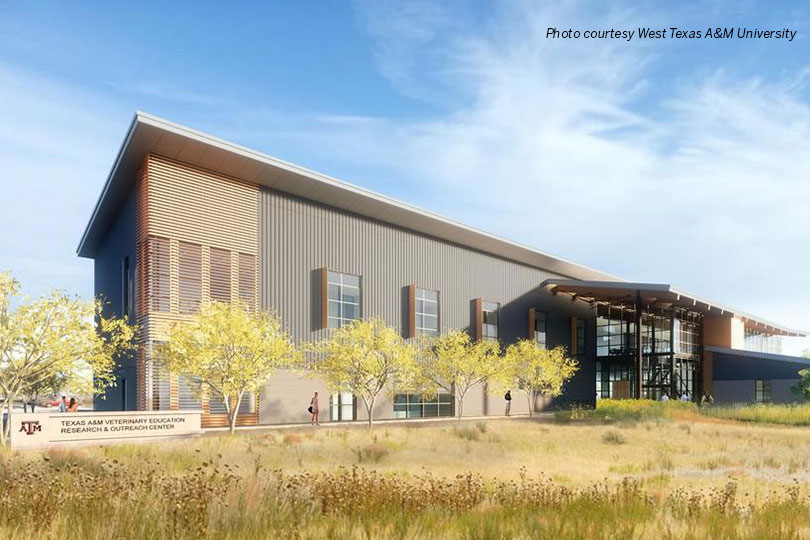By Jennifer Dorsett
Field Editor
Soon, Texas Panhandle students won’t have to leave the area they’ve always called home to become veterinarians anymore.
That’s because the Texas A&M University System is in the final stages of developing an innovative “2+2 program,” the result of a partnership between Texas A&M University’s College of Veterinary Medicine & Biomedical Sciences and West Texas A&M University’s (WTAMU) Paul Engler College of Agriculture & Natural Sciences.
Through the collaborative Veterinary Education, Research & Outreach (VERO) 2+2 program, students will spend their first two years at the WTAMU campus in Canyon, then transfer to Texas A&M in College Station to complete their education.
It’s the culmination of a decade-long project focused on bringing Texas A&M’s highly regarded Doctor of Veterinary Medicine (DVM) program to other areas of the state.
“We started bringing students from the College of Veterinary Medicine to the Panhandle for a production tour in 2008,” Dan Posey, DVM, a clinical professor of veterinary science at WTAMU and VERO’s academic coordinator, said. “In 2009, we decided that we needed to have boots on the ground up here. So, they hired Dr. Griffin and me to move up here and establish the Veterinary Education, Research and Outreach Center on the West Texas A&M campus.”
The Texas Panhandle is home to an estimated 2.5 million head of cattle on feed—around 30 percent of the nation’s beef supply. Nearly 90 percent of those animals are raised in just 10 Panhandle counties.
But a shortage of rural veterinarians in the Panhandle and across the state spurred the Texas A&M system to create alternative education pathways focused on meeting those needs.
“This program is building a food animal veterinarian who will go to a rural practice,” Posey said. “Our focus isn’t really just on large animals or food animals, but it’s on rural practice. We’re trying to build rural practitioners in this program, because that’s who takes care of the cow-calf side of beef cattle and the beef industry in Texas.”
In 2019, WTAMU broke ground on a 22,000-square-foot VERO facility to house the DVM curriculum and externship programs in the Texas Panhandle, as well as the 2+2 program.
The college is focused specifically on recruiting students from rural areas, particularly those from the Panhandle.
“The recruitment base is actually reaching out into the rural communities, working with high schools, junior highs, the veterinary clinics and recruiting that base from the rural area,” he said.
Posey travels to campuses in the Panhandle and South Plains to recruit students to the program.
Recruiting the right audience is important, because research shows most wish to return to the area where they grew up after graduation. According to Posey, 60 percent of graduates return to within 100 miles of their hometown.
“The way we solve the rural shortage in Texas is by recruiting in the rural areas,” he said. “We get them to college, mentor them through the process, get them to veterinary school and then see the marvelous change in the dynamics in Texas as far as rural service by graduating a different type of veterinarian coming out of the Texas A&M program.”
The first cohort of fourth-year veterinary students will begin clinical rotations at WTAMU this summer, and a cohort of first-year veterinary students will begin their DVM education at VERO in the 2021 fall semester.

